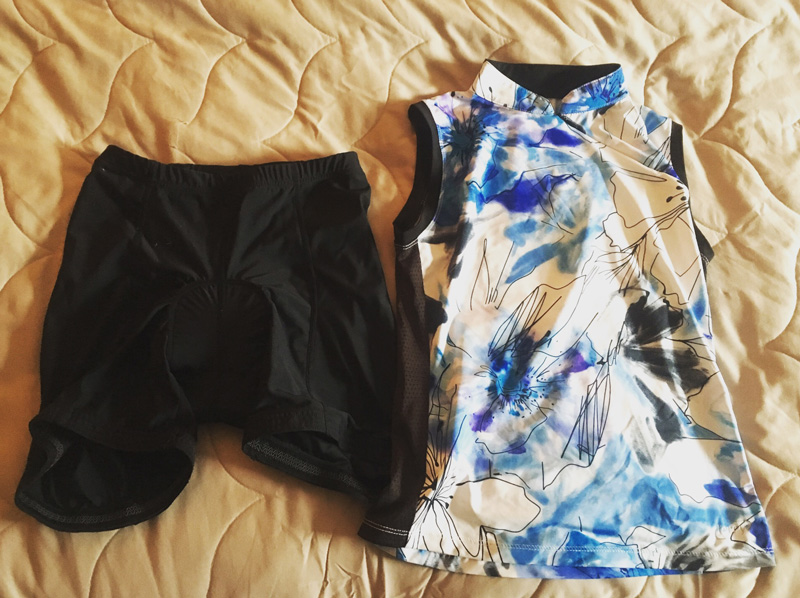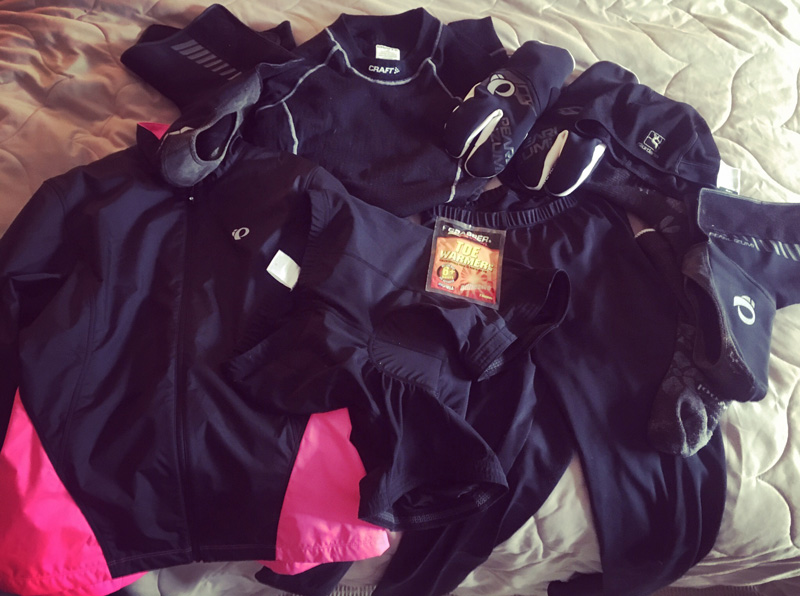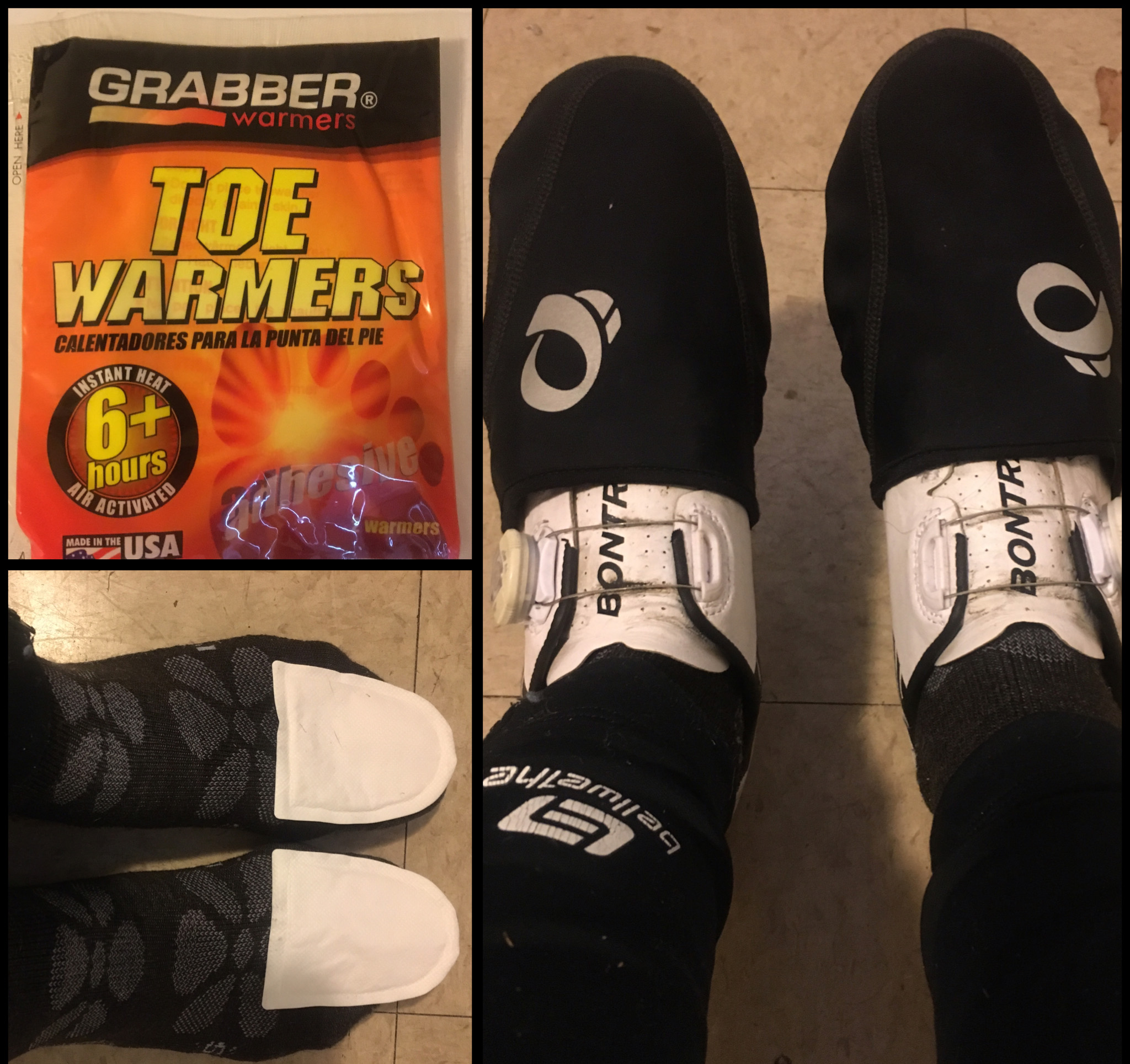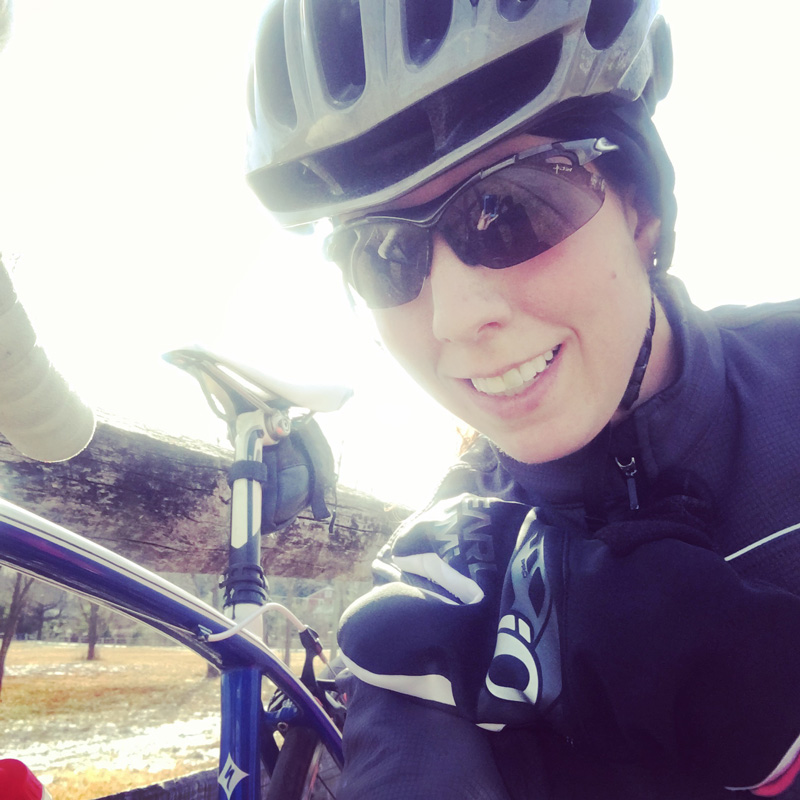It’s that time of year when a lot of cyclists pack up their bikes for the winter, or relegate them to stationary status on the trainer. They pedal away the miles, going nowhere and wistfully stare out a window at the great outdoors. If you are in the midst of a blizzard, then yes, riding on the trainer is definitely advisable over going outdoors, but with the correct gear and layering techniques you can ride relatively comfortably outside year round. Before you put your bike in the back of the garage or relegate it to stationary status, consider adding a few pieces of gear to your cycling wardrobe that might allow you to keep yourself riding outside all the way through until the spring.
Once the temperatures drop below fifty-five degrees, you will need to start adding clothing.
Keeping your knees covered is essential for the health of the joint, so investing in a pair of knickers, or even knee warmers will be the first step in getting you through this first temperature drop. Knee warmers, arm warmers and a good wind vest should pretty much keep you covered in these moderately cold temperatures of fifty-five and even down to about forty-five degrees. The great thing about warmers is that if the ride starts off at fifty degrees, but then warms up to sixty-five or seventy degrees as the day goes on, you can peel these off and stick them in your pocket and avoid roasting to death in a winter jacket. A good pair of medium weight, full fingered gloves are a necessity as well. Nothing is worse than that feeling of your bare fingers burning in the cold, so put aside your summer half-fingered cycling gloves and pick up a pair that will get you down to about forty degrees comfortably. Most gloves have some kind of temperature rating on the label, so make sure to check that to be certain the gloves will be warm enough.

What I wear for a summer bike ride.

What I wear for a winter bike ride.
Ok so adding a few pieces of gear over and above just your shorts and jersey isn’t that bad. BUT WAIT! What about when it gets REALLY COLD?
Everyone has different ideas about the definition of “really cold.”. For some, really cold is forty degrees, for others it’s closer to fifteen. I would say, from personal experience, that riding a road bike in fifteen-degree weather is not fun or advisable. However, I have gone on longer rides in temperatures all the way down to the mid-twenties and have been able to stay relatively warm with some additional gear.
So when the temperatures take that next dip and start to get closer to the freezing mark you will need some further gear over and above the warmers and full fingered gloves. You are going to need to start layering and the first layer should obviously be some kind of base layer. Many of the cycling clothing companies make their own or you can buy something fleece lined from a company like Under Armor or even something less expensive from a place like Target.
Once you have your base layer investing in a solid jacket made with wind stopping material is invaluable. I have been able to go out with just one warm base layer and my jacket and stay warm for hours. There are many great winter cycling jackets that also have sleeves that you can take on and off, so you can use this jacket as a wind vest in the fall and then add the sleeves back on and ride with it all winter long. Investing in cold weather riding gear can get expensive, so finding a piece like this, which serves a dual purpose can help save some money.
Tights or leg warmers made with wind stopping material are another necessity. The light weight knee warmers you wore in the fall will not give your legs enough protection as a cold twenty-five-degree wind blows right through them. The gear made with the wind stopping material really does make a difference once the temperatures drop below freezing.
So now that your core and your legs are nice and toasty, what about the extremities?
How do you prevent your toes from feeling like little blocks of ice in your shoes? Those shoes that are so breathable and great at keeping your feet cool during the summer are not your friend during the winter as the cold wind blows and goes right through them your feet will freeze. So the first most basic line of defense would be a toe cover. These covers go right over the front of your shoe and block out some of that wind. The next step, as it gets even colder is a full shoe cover which is basically like a thick sock that goes over your shoe, blocking out a majority of the wind. The last additions for really cold days are a good wool sock and disposable toe warmers either inside or outside your shoe over your toes. These toe warmers heat up when they are exposed to the air and really do make a difference on bitterly cold days.

Toe covers and toe warmers are inexpensive ways to help keep your feet warm.
Moving up the body, the next item would be a solid winter glove. If your hands get too cold, you will have trouble shifting your bike and even gripping the handle bars. Both of those things are neither fun nor safe. In exceedingly cold weather Lobster gloves are a great option. They are like a mitten with a split between your middle and ring fingers. I find that allowing the two fingers to keep each other warm makes a big difference and keeps my hands toasty for the whole ride. There are other cold weather cycling gloves that are more like a traditional glove and even a really good pair of ski gloves can work to keep your fingers warm.

Hands staying nice and toasty in my lobster gloves.
Last but not least, what to wear on your head neck and face for the extreme cold. I usually get away with a little fleece lined hat under my helmet that helps keep the heat in and covers my ears. Some people go for a full balaclava which covers your head, neck and most of your face. There are also items like Turtle Fur that go around your neck and can also be pulled up to partially cover your face.
So much gear…is it really worth the effort?
I know this seems like a lot of gear, but many of these items do not need to be cycling specific and may be things you own already. Items like leg warmers and shoe covers are specific to cycling, but gloves, socks, base layers etc., don’t have to be. If you layer up properly and make sure to have appropriate protection for your hands and feet you really can stay warm even on the coldest of days out on the road. Once you do get dressed it is so nice to get outside and enjoy the fresh air during a season when so many of us are forced to spend so much time indoors.